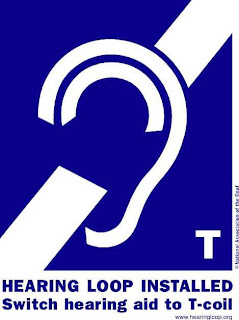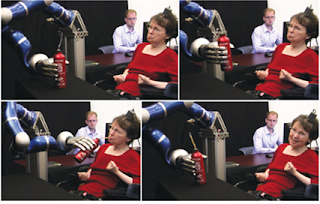Access Ability at the San Diego Museum of Man
 |
| A Public Exhibition Focused On Accessibility |
I’m fortunate this week to be attending the CSUN event in
San Diego, which is the largest AT related conference in the world with over
5000 professionals in the field with a great focus on eAccessibility and the
needs of the blind. It’s a great location to meet with people in the field,
exchange ideas and share resources, but the truth is it has a limited impact on
people outside of the world of access to technology. But whilst here I took an
opportunity to visit the San Diego Museum of Man, which was addressing very
similar issues, but in a very different way.
Access Ability is a public exhibition which is seeking to
raise awareness of “many ways to do the same thing” It is targeted upon
children and families and is loosely divided into two types of activity. The
first part offers people the chance to use some of the technologies that help
people with a disability, you can print your name in Braille, try out a high
tech sports wheelchair in race simulation, try to navigate a maze with a white
cane and a mask and a range of tools such as communications aids. The kids I
saw were fascinated by some of the items on display, especially trying to get
up a ramp in a wheelchair and through closed door, you could see how they began
to understand how much difference the slope on a ramp makes, and how an
automatic door opener makes it possible to get into a room which otherwise was
almost impossible.
The second area asked the visitors to think about different
ways to do the same thing. There were a range of stories by young people about
what they used to help them do the same thing as everyone else, and some fun
things to try. One exhibit had different door handles and asked people to think
about which were easiest to manipulate, another showed adapted cooking utensils
whilst a third showed how the same information could be made available in
different formats to help young people to learn.
Whilst it was designed to be interactive and fun, the
exhibition was hugely informative and helped children shape ideas and attitudes
towards design for all which will be of great value to people with a disability in the future.
If this exhibit challenged young minds, elsewhere in the
museum, issues around disability were also being raised. Open questions were
asked in the future of mankind section about the ethical issues around gene
therapy for conditions such as Parkinson's disease, and a debate about how far
would people like to see technology enhancing human abilities, both for the
whole population and for people with a disability specifically. For instance
the use of artificial hips and cochlear implants is now widely accepted, but
are we happy with the idea of robotic eyes for the blind, or though controlled
prosthetic limbs? Flicking through some of the thoughts people had, its clear
that not everyone approved, including
some people with a disability who feared a culture of enforced surgery, and
being blamed for being disabled if they weren't prepared to undergo the
required procedures.
 |
| Where is the boundary for Assistive Technology in a Modern Age? |
I left the museum (which was highly accessible in itself)
with many questions. I would have loved to have seen a historical perspective
on aids for people with a disability included, something which gave a sense of
the pace of progress, but I also wondered if such an exhibition would be
valuable and have an impact in Doha, what are your thoughts?
More information is at http://www.museumofman.org/access/ABILITY
David Banes, Mada Center CEO






